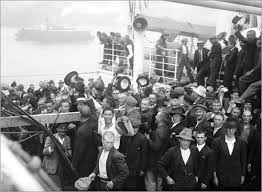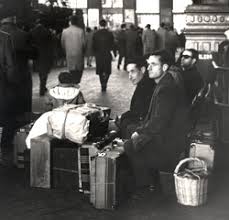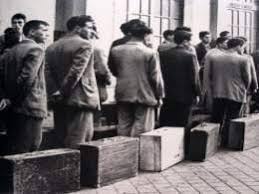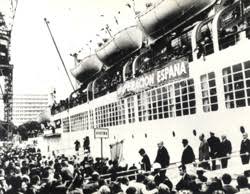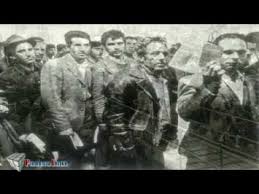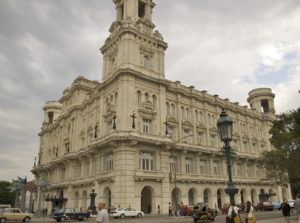 THE SPANISH EMIGRATION TO CUBA. HISTORY OF A LONG JOURNEY.
THE SPANISH EMIGRATION TO CUBA. HISTORY OF A LONG JOURNEY.
Spanish emigration to Cuba began in 1492, continued in 1898, and has continued. When the first Spanish ship approached Cuba in 1492 through the area of Gibara in the eastern region of our island, the captain of the “Santa Maria” Christopher Columbus did not know that it was an island but part of the Asian continent. It was part of a dream cherished by him for a long time.
In Cuba, as in other places in the so-called New Spain, the Spanish influence was decisive, but unlike the continental lands, on the island, the indigenous population did not survive. In the other lands, a mestizo culture was imposed, a product of both cultures, the indigenous and the Spanish, over which religion predominated, which was imposed by blood and fire. Later, a similar mixture would occur throughout the Caribbean, but with African slaves.
In Cuba almost everyone, except the black population descended from slaves, was overwhelmingly Spanish or descended from Spaniards, to which was added after the independence of Cuba and at the beginning of the 19th century a gigantic Spanish migration in search of new horizons and that they were fleeing from a Spain that was economically and morally worn out by its colonial wars, which made many young Spaniards desert the army and start a new life in America and in Cuba in particular.
Spanish culture completely predominated throughout the first half of the 19th century with expressions in gastronomy, music, commerce, literature, theater, customs, in short, in the entire cultural and economic spectrum, although in the latter it was giving ground before American capital.
CUBA, DESTINATION OF THE SPANISH COLONY.
Cuba, a Spanish colony, was always the desired destination of the peninsular from its discovery until the 19th century. From the independence of Cuba, it became a continuous process during the first half of the 20th century, mainly in its first four decades and with different characteristics, since in the colonial period it evolved from colonization directed to the creation of urban nuclei, with the establishment of white settlers, until the entry of free workers under the salaried regime, in accordance with the development of the Cuban economy and production system, but later it had marked political and economic overtones.
Until 1904, Cuba was the main destination for Spaniards who decided to emigrate, and of these, four out of every ten Spaniards settled in Havana, and a similar proportion in the sugar provinces of Oriente, Camagüey, and Las Villas.
After this economic emigration, they went into political exile during the period 1931 to 1945. It is in those years that a kind of reserve towards Spanish emigration begins, even despite the large Iberian composition of the population, because they were considered dangerous that could further alter the unstable political and social situation on the Island.
However, almost all Spanish emigration to Cuba was characterized by humble and hardworking people who were looking for a better life and for this they were willing to submit to great sacrifices, which went beyond the painful ones when leaving their family and their previous life behind.
The journey of the Spanish emigrants to Cuba went through a long ordeal that began in the village or town of origin or in Madrid.
If they lived near one of the large ports from which the ships departed, the journey as a whole was easier, but if not, they had to move to the port assigned by the migration authorities, for which the railway was used. in the first instance, but there were also caravans of families, friends or countrymen who traveled on foot or in horse-drawn carts to the place where the ship left.
Once they arrived at the corresponding port, it was not uncommon for a long stay to be made until the ship left, meanwhile laborious procedures were passed to present to the port authorities. And finally the sad moment of leaving came, because many knew that they would never see their family or their people again, that they were going on a journey of no return, as Alberto Cortés told us in his poem-song “El Abuelo” and that became the destination of most Spanish emigrants to America.
But the journey was by no means a bed of roses, it was actually something exasperating. This never lasted less than twenty days, full of discomfort, dirt, lack of hygiene, hot or cold, overcrowding, hunger, bad food, and even water shortages.
Already in the twentieth century, these inhuman conditions improved significantly because the laws were more demanding with the shipping companies that provided living spaces, sanitary conditions, infirmary, bathrooms, medical assistance, water and food in good and sufficient condition, heating, ventilation, and cabins.
And then there were the conditions of entry to Cuba, which with the immigration camp called ‘Triscornia’, which must be discussed in detail, constituted another penalty. And it must be said that two million Spaniards passed through Triscornia, between 1900 and 1959, most of them in the first decades of the 20th century. Note that the total population of Cuba in 1898 was 1 million 632 thousand inhabitants.
DISINTEGRATION OF THE EMIGRATION AND RETURN AGAIN WITH GREATER IMPETU.
After the disintegration of Spanish colonialism in 1899, emigration to Cuba was temporarily stopped, and many more decided to return to Spain. But after a few years, emigration gained momentum again, and with much more force than before, due to the economic opening promoted by the Cuban political situation, a migratory flow that continued for the first two decades of the 20th century.
Proof of this is that in 1900, the population of Cuba was 1.6 million, of which 127,000 were Spanish by birth, 6,400 of them were Catalan, but in 1920, with a population of almost three million inhabitants, more than 300,000 Spaniards lived on the island.
Historians affirm that the largest human transfer from Spain to America took place at this time, spanning from 1880 to 1930 and exceeding all previous centuries of conquest and colonization. Of the great traffic of more than three million people in half a century, a third part reaches Cuba and a very important part does not return, but settles down and reproduces itself biologically and culturally.
Of course, not all regions of Spain had an equal influence on the shaping of Cuban culture, we have its simple explanation in the fact that we Cubans call the Spaniards “Galicians” because that was the largest emigration we assimilated.
The Spaniards and their descendants were grouped into cultural and mutual aid societies, which began with the Spanish Center and later became more regional ones.
The Galician Center of Havana and the Asturian Center of Havana were precisely the institutions with the largest number of members and therefore with the greatest economic power. The proof is that in the most desired place in Havana at the time, Central Park, facing each other, these associations had their headquarters in splendid, luxurious, and functional palaces.
The European heritage of Cubans comes mainly from the Iberian Peninsula; Spaniards settled in Cuba (Andalusians, Canaries, Asturians, Catalans, Galicians, Basques, and Castilians) are the image of the Cuban phenotype compared to the part of Afro-descendants.
This is what Cuba was doing until 1959…
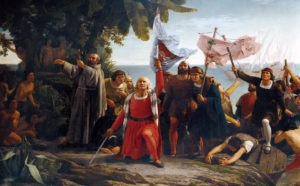 LA EMIGRACIÓN ESPAÑOLA A CUBA. HISTORIA DE UN LARGO VIAJE.
LA EMIGRACIÓN ESPAÑOLA A CUBA. HISTORIA DE UN LARGO VIAJE.
La emigración española hacia Cuba comenzó en 1492, prosiguió en 1898 y se prolongó hasta la actualidad. Cuando el primer barco español que se acercó a Cuba en 1492 por la zona de Gibara en la region oriental de nuestra isla en Octubre de 1492, el capitan de la “Santa Maria” Cristobal Colón no sabia que era una isla sino parte del continente asiatico. Era parte de un largo sueño acariciado por el.
En Cuba, al igual que en otros lugares de la llamada Nueva España, la influencia española fue decisiva, pero a diferencia de las tierras continentales, en la Isla la población autóctona no sobrevivió. En las otras tierras se fue imponiendo una cultura mestiza producto de ambas culturas, la indígena y la española, sobre las cuales predominó la religión, que fuera impuesta a sangre y fuego. Más tarde ocurriría en todo el caribe similar mezcla, pero con los esclavos africanos.
En Cuba casi todos, salvo la población negra descendiente de esclavos, era en su inmensa mayoría o española o descendiente de españoles, a lo que se añadió después de la independencia de Cuba y a principios del siglo XIX una gigantesca migración española en busca de nuevos horizontes y que huían de una España desgastada económica y moralmente por sus guerras coloniales lo que hizo a muchos españoles jóvenes desertar del ejército y comenzar una nueva vida en América y en particular en Cuba.
La cultura española predominó completamente toda la primera mitad del siglo XIX con expresiones en la gastronomía, la música, el comercio, la literatura, el teatro, las costumbres, en fin en todo el espectro cultural y económico, aunque en este último fue cediendo terreno ante el capital norteamericano.
CUBA, DESTINO DE LA COLONIA ESPAÑOLA.
Cuba, colonia española, siempre fue un destino deseado de los peninsulares desde su descubrimiento hasta el siglo XIX. A partir de la independencia de Cuba, ésta se convirtió en un proceso continuado durante la primera mitad del siglo XX, principalmente en sus primeras cuatro décadas y con diferentes características, ya que en la etapa colonial fue evolucionando desde una colonización dirigida a la creación de núcleos urbanos, con el establecimiento de colonos blancos, hasta la entrada de trabajadores libres en régimen de asalariados, de acuerdo al desarrollo de la economía y del sistema productivo cubanos, pero después tuvo marcados visos políticos y económicos.
Hasta 1904 Cuba fue el destino principal de los españoles que decidieron emigrar, y de ellos, cuatro de cada diez españoles se asentaron en La Habana, y una proporción similar en las provincias azucareras de Oriente, Camagüey y las Villas.
Después, de esta emigración económica se pasa al exilio político durante el período 1931 a 1945. Es en esos años empieza una especie de reserva hacia la emigración española, aún a pesar de la gran composición ibérica de la población, porque se consideraban peligrosos que podían alterar aún más la situación política y social inestable en la Isla.
Sin embargo, casi toda la emigración española hacia Cuba se caracterizaba por tratarse de personas humildes y trabajadoras que buscaban una vida mejor y para ello estaban dispuestos a someterse a grandes sacrificios, que iban más allá de los dolorosos al dejar su familia y su vida anterior atrás.
El viaje de los emigrantes españoles hacia Cuba transitaba por un largo calvario que empezaba en la aldea o pueblo de origen o en Madrid.
Si vivían cercanos a uno de los grandes puertos de donde partían los buques, el viaje en su conjunto era más sencillo, pero si no era así, tenían que trasladarse al puerto adjudicado por las autoridades de migración, para lo que se empleaba la vía ferroviaria en primera instancia, pero también había caravanas de familias, amigos o coterráneos que viajaban a pie o en carros tirados por caballos hasta el lugar de donde partía el buque.
Una vez que llegaban al puerto correspondiente, no era raro que hubiera que hacer una larga estadía hasta la partida del barco, mientras tanto se pasaban trabajosos trámites a presentar ante las autoridades portuarias. Y finalmente llegaba el triste momento de partir, pues muchos sabían que no volverían a ver a su familia ni a su pueblo, que iban a un viaje sin retorno, como nos narró Alberto Cortés en su poema-canción “El Abuelo” y que se convirtió en el destino de la mayoría de los emigrantes españoles a América.
Pero la travesía no era ni mucho menos un lecho de rosas, en realidad era algo desesperante. Esta nunca duraba menos de veinte días, llenos de incomodidades, suciedad, falta de higiene, frío o calor, hacinamiento, hambre, comidas en mal estado y hasta escasez de agua.
Ya en el siglo XX estas condiciones infrahumanas mejoraron sensiblemente, porque las leyes fueron más exigentes con las compañías navieras que propiciaron espacios vitales, condiciones sanitarias, enfermería, baños, asistencia médica, agua y alimentos en buen estado y suficientes, calefacción, ventilación y camarotes.
Y después estaban las condiciones de entrada a Cuba, que con el campamento de inmigración llamado ‘Triscornia’, del que hay que hablar en detalle, constituían otro penar. Y hay que decir que por Triscornia, entre 1900 y 1959, pasaron dos millones de españoles, la mayoría en las primeras décadas del siglo XX. Notemos que la población total de Cuba en 1898 era de 1 millón 632 mil habitantes.
DESINTEGRACION DE LA EMIGRACION Y VUELTA DE NUEVO CON MAYOR IMPETU.
A partir de la desintegración del colonialismo español en 1899, se detuvo temporalmente la emigración a Cuba, es más muchos decidieron regresar a España. Pero al cabo de pocos años la emigración volvió a tomar ímpetu, y con mucha más fuerza que antes, debido a la apertura económica que promovieron la situación política cubana, un flujo migratorio que se mantuvo por las dos primeras décadas del siglo XX.
Una prueba de ello es que en 1900, la población de Cuba era de 1,6 millones, de los cuales 127 mil eran españoles de nacimiento, de ellos 6.400 eran catalanes.pero en 1920, con una población de casi tres millones de habitantes, en la isla vivían más de 300.000 españoles.
Afirman los historiadores que en esta época se produjo el mayor de los trasvases humanos desde España hacia América,que abarca desde 1880 hasta 1930 y que supera todos los siglos anteriores de conquista y colonización. Del gran trasiego de más de tres millones de personas en medio siglo, una tercera parte llega a Cuba y una parte muy importante no regresa, sino que se asienta y se reproduce biológica y culturalmente.
Por supuesto que no todas las regiones de España influyeron por igual en la conformación de la cultura cubana, su simple explicación la tenemos en el hecho de que los cubanos a los españoles les decimos “gallegos” porque esa fue la mayor emigración que asimilamos.
Los españoles y sus descendientes se agruparon en sociedades culturales y de ayuda mutua, que comenzaron con el Centro Español y después fueron derivando en otras más regionales.
Fueron precisamente el Centro Gallego de La Habana y el Centro Asturiano de La Habana las instituciones con mayor cantidad de miembros y por ende con mayor poderío económico. Prueba es que en el lugar más deseado de La Habana de entonces, el Parque Central, uno frente al otro, estas asociaciones tenían su sede en espléndidos, lujosos y funcionales palacios.
El patrimonio europeo de los cubanos proviene principalmente de la península Ibérica; los españoles asentados en Cuba (andaluces, canarios, asturianos, catalanes, gallegos, vascos y castellanos) son la imagen del fenotipo cubano frente a la parte de los afrodescendientes.
Asi se fue haciendo a Cuba hasta 1959….
Agencies/ MemoriasCubanas/ Carlos Rodriguez/ Extractos/ Excerpts/ Internet Photos/ Arnoldo Varona/ www.TheCubanHistory.com
THE CUBAN HISTORY, HOLLYWOOD.



 SPANISH Emigration to Cuba. HISTORY of a Long Journey. * LA EMIGRACIÓN Española a Cuba. Historia de un Largo Viaje. PHOTOS.
SPANISH Emigration to Cuba. HISTORY of a Long Journey. * LA EMIGRACIÓN Española a Cuba. Historia de un Largo Viaje. PHOTOS.